Buff and Recoat Hardwood Floors
Recoating hardwood floors has a couple of different names that all mean the same procedure – “screen and recoat” and “buff and coat”.
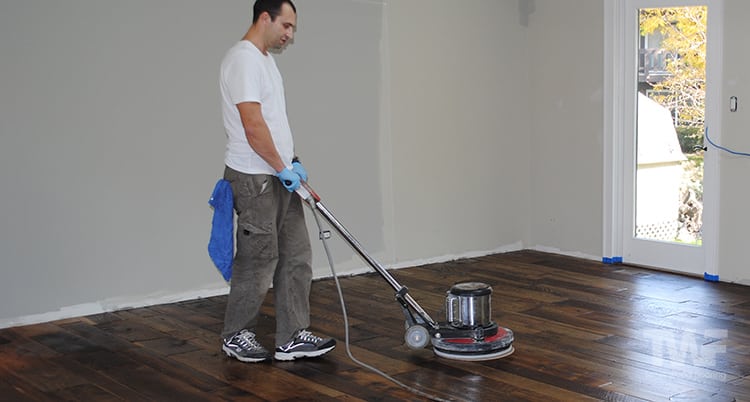
Basically it is taking a buffer and a mesh sanding screen, or abrasive pad, and abrading the existing floor finish so a new top coat of finish will mechanically adhere to it.
There is also a similar process done with chemicals that etches the surface layer so the new coating will adhere to the old one.
Why Do It?
Well no matter how good your hardwood floors finish system is, after time it will start to wear from all the abuse it’s subjected to.
And as we all know, hardwood floors are the most trafficked part of any house. They need maintenance to protect them from the day to day abuse they’re exposed to – dirty shoes, dog nails, drinks spilling – the list goes on and on.
As your finish is subjected to all of the above, over time it starts to collect contaminants, wear and get scratched.
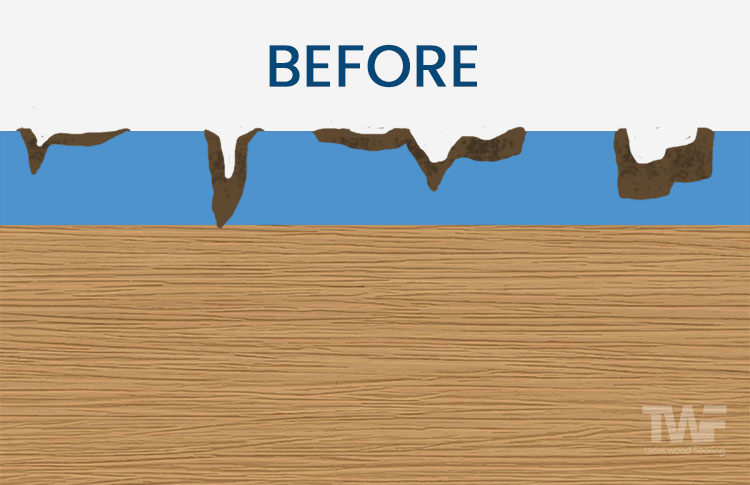
By deep cleaning, then buffing or screening your floors every so often and re-applying a new finish coat, you give your floors a fresh look, rebuild the wear layer, and help them to last much, much longer before they need to be re-sanded.
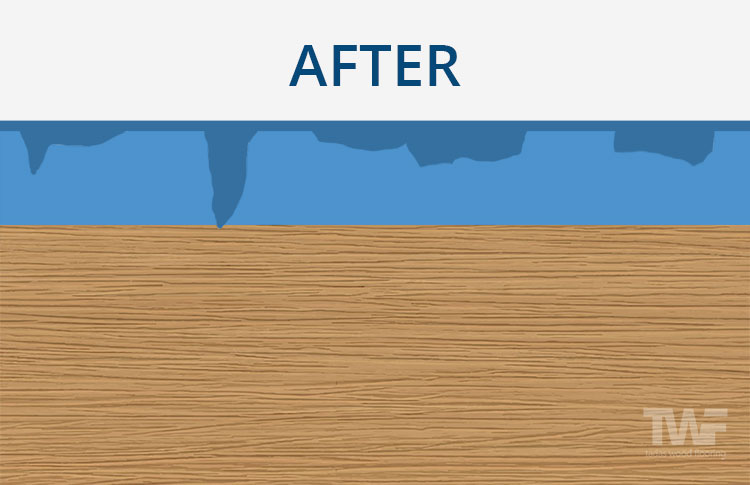
Some people also want a recoat to change the sheen on their floors. If you have super shiny glossy floors but you’d rather have a semi-gloss or a matte sheen, then with a buff and coat you can do that within a day.
When Should a Buff and Coat Be Done?
A lot of people think it can be done once the finish has started to wear through.
Unfortunately, if your floors get to this stage then they’re already past being a candidate for screening and recoating. This procedure needs to be done before the finish has become too thin or worn through and you can see wear and damage.
This floor below is a good example.
See the grey areas where the finish has worn through. It also has scratches that are too deep. (We won’t even mention the drum marks from the bad sanding job.) It’s definitely not a candidate for a buff and coat…
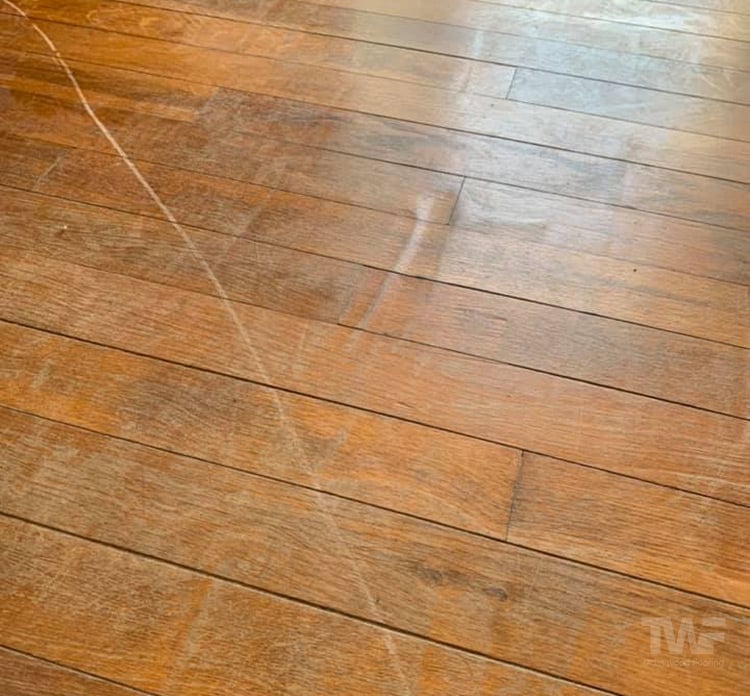
You want to screen and recoat your floors well before they get to this stage.
It’s like putting on sunblock.
Sunblock needs to be applied before your skin is exposed to the sun and at different times during the day as the protective layer thins out. If you let it wear thin and get sun-burnt, then it’s too late to do anything about it. No matter how much sunblock you apply afterwards, once the damage is done to your skin, it’s done.
Its the same with your hardwood floors.
The areas you should be keeping an eye out for are the high traffic areas in your home – kitchens, entrances, hallways, under chair legs and high traffic flow areas around furniture etc.
Once you start seeing signs of wear and tear in these areas, start thinking about adding another coat of finish for more protection.
A general time frame is every 3-5 years or so, depending on how much traffic your floor sees.
Are All Hardwood Floors a Candidate for a Buff and Coat?
Put very simply – NO.
Many floors have far too much damage to qualify to have a screen and recoat.
If your hardwood floor has deep scratches, pet urine stains, pot plant water damage, UV discoloration, grey worn out areas or layers of caked on floor polish (like in the photo below) then no matter how much buffing you do, and how much new finish you put on, you will still have these ugly, damaged parts showing through.
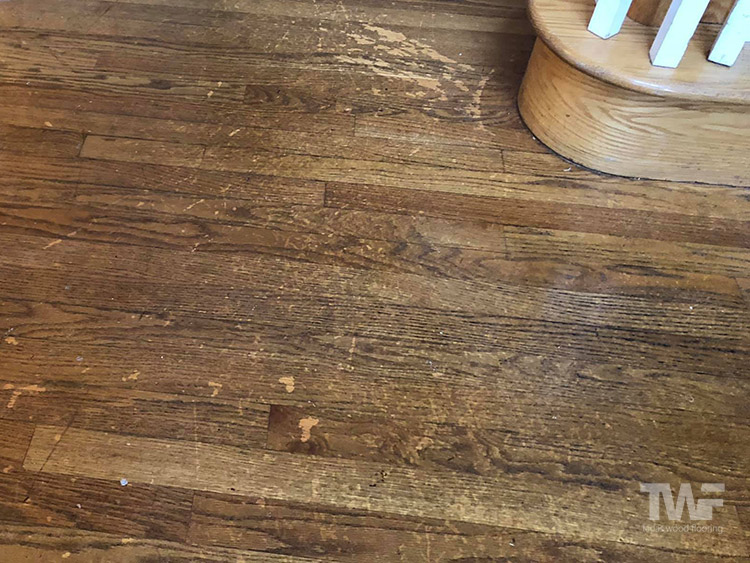
In recent years there has been an influx of businesses and franchises that make huge promises and claims about being able to bring your floors back to life cheaply and without the dust and mess of traditional hardwood floor refinishing.
They promise fast, easy results in a day that will be “as good as” the traditional process of hardwood floor sanding and refinishing.
Are these claims everything they’re cracked up to be?
Is it really as easy as quickly buffing up a damaged, scratched up, dented, discolored and worn through floor, and then brushing on a new topcoat to make your floors look brand new?
Unfortunately, if you just recoat over scratches, pet stains, water damage, UV discoloration and worn through areas, then, not only will they still be there, but they’ll be highlighted even more by the new finish.
As an example, here’s a buff and coat that was done to try and cover the damage in the floor…
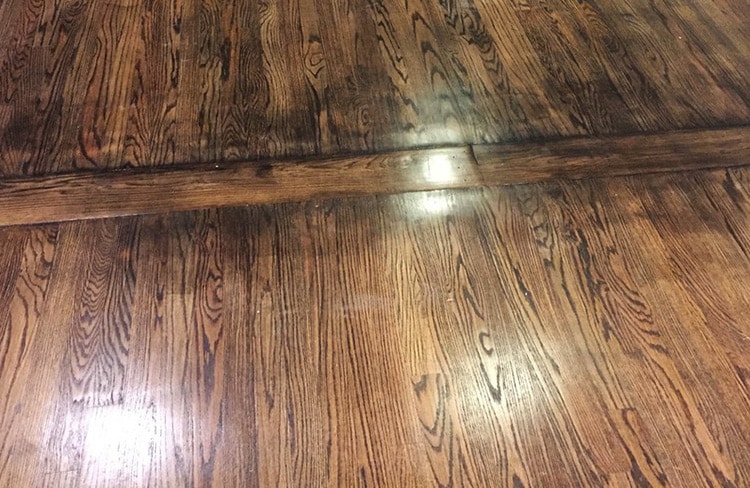
Look great doesn’t it.
If only it was that easy.
If it really was that simple, we would have given up hardwood floor sanding years ago to just specialize in buff and coats.
There are countless unhappy customers that were promised the world, that have complained on many websites about the bad outcome from just a “quick and cheap” buff and coat.
Take a few minutes and do a quick search on Google.
The only way to actually take out bad damage is to bring in the sanding machines, take the complete layers of finish off, repair the damage with proper traditional sanding techniques and/or new flooring and then apply a whole finish system again.
Here’s a floor we did that had pet urine damage…
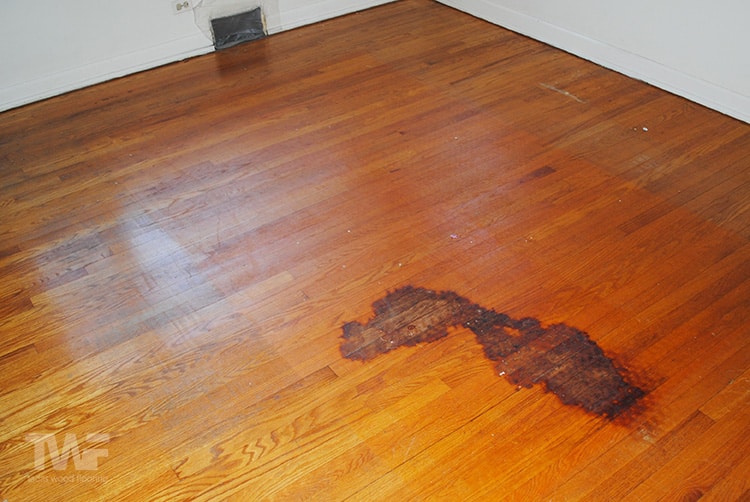
And here is the same floor after a full sand and refinish…
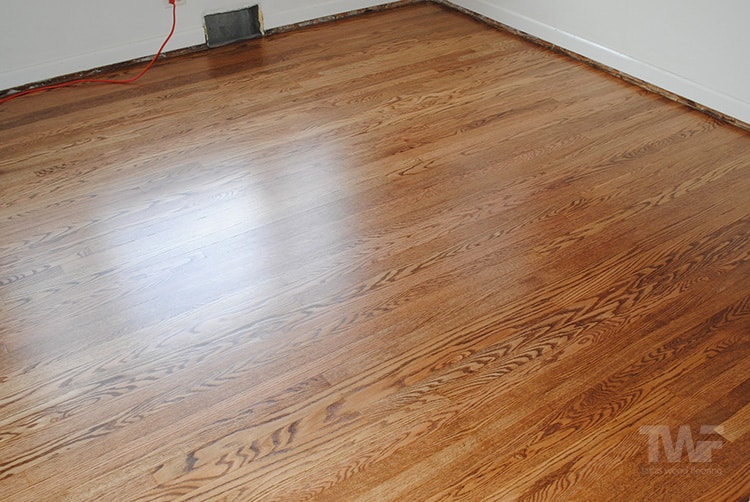
There is zero chance this floor would look this good with just a buff and coat.
Doing it the proper way will guarantee the damage is removed and your floors will look brand new again.
The Trouble With Certain Hardwood Floor Cleaning Products
Another issue you may run into that will prevent you from having a screen and recoat is surface contamination.
There are many cleaning products that homeowners have been conned into buying that will affect the adhesion of a new coat, no matter how much screening and buffing takes place.
Screening won’t remove any of this contamination. All it will do is further smear it all over the floor.
Below is a hardwood floor that had been coated multiple times with one of these big-box-store hardwood floor polishes. You can see the horrible outcome from their buff and coat attempt…
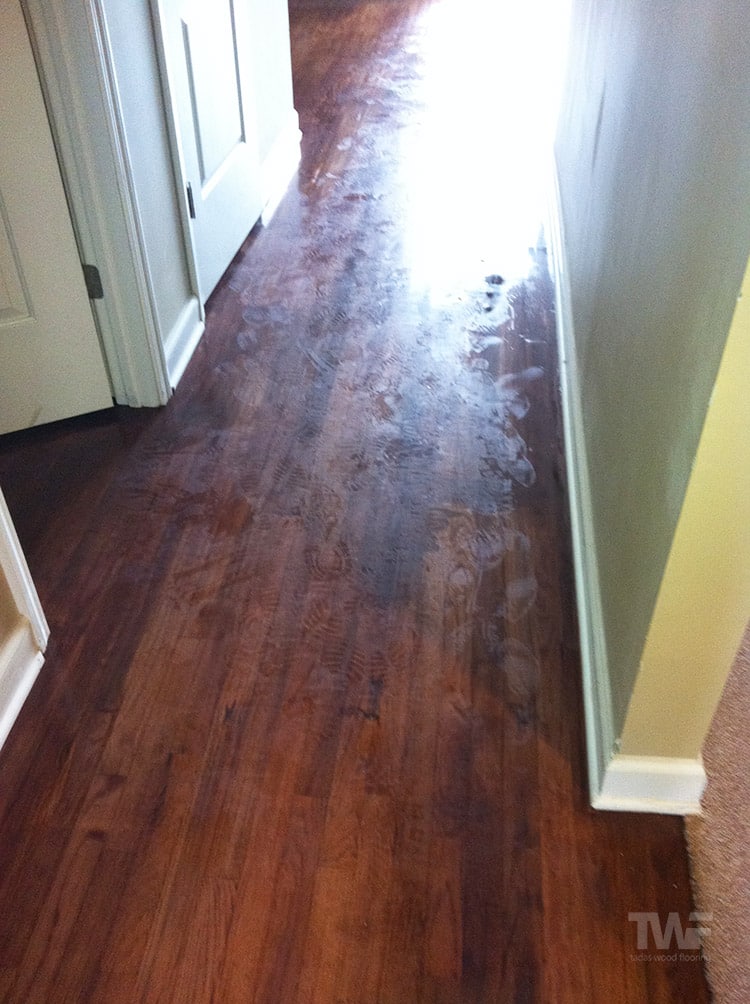
Because of this contamination, the finish in this section wasn’t able to cure properly. Thus, all the footprints in the uncured finish, after more than a week.
Here’s another section of this buff and coat disaster that actually did dry somewhat…
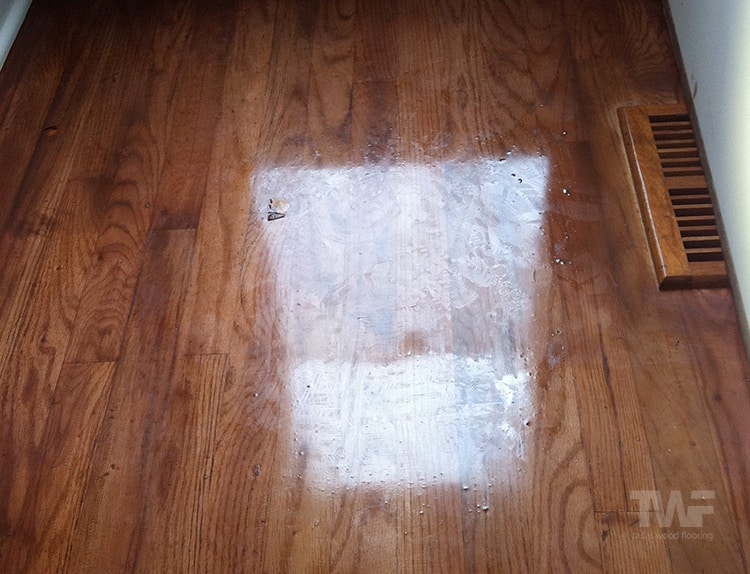
You can see the finish peeling away after only a few days.
Thankfully we were able to save these floors by doing a full sand and refinish.
Here is another buff and coat attempt that went horribly wrong…
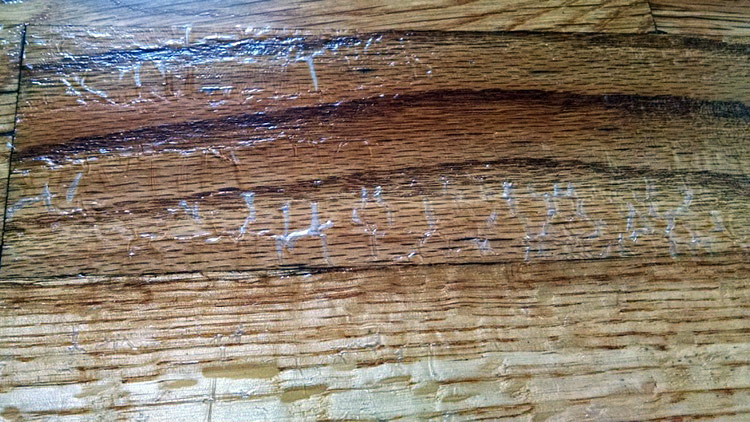
The contamination caused an ‘orange peeling’ effect.
Here’s another attempt that didn’t turn out well either…
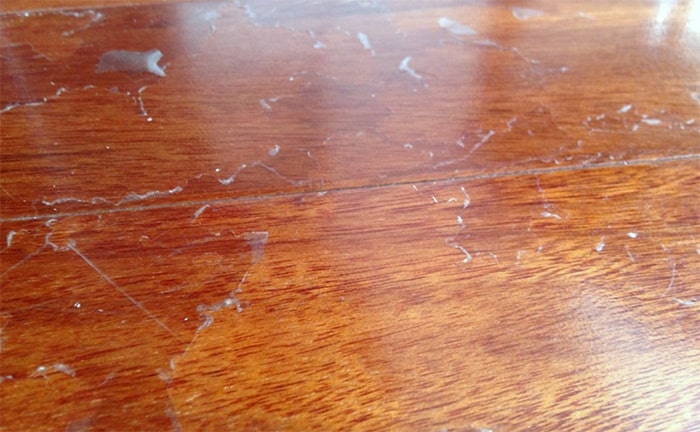
If the top coat can’t adhere properly, you’ll have a flaking, peeling nightmare on your hands.
Not fun.
That’s why it’s super important for anyone thinking about a buff and coat for their floors to do a thorough test to determine if there is any contaminating film that will stop the new finish from adhering.
When Is a Buff and Coat Possible?
If you only have light surface scratches, and no real deep damage like pet urine stains etc. then you could be the perfect candidate for a screen and recoat.
It’s important to ask the professional coming out to look at your floors exactly what to expect and what will be possible.
Make sure the business performs multiple tests and is 100% confident the new finish will adhere. Ask all about their procedure – do they only use a screen, or will they also be using a chemical scrub, how will they deal with wax, what will and won’t come out etc.
How Do We at Tadas Wood Flooring Deal With Buff and Coats?
We receive our share of requests to come out and look at floors where the owners are looking for a “quick” restoration. Usually they’ve seen a website marketing this cheap “magic” buff and coat solution.
The majority of them are far beyond rejuvenating with a screen and recoat. Usually we have no choice but to recommend a proper hardwood floor restoration – not just a quick cover-up that never works out anyways.
For those floors that are potential candidates, we run multiple tests in various locations to ensure we can obtain a proper finish adhesion. Unfortunately, due to wax, bad cleaning products etc. some floors don’t pass the test and can’t be recoated.
If a floor has no contamination issues, then we can usually go ahead.
One of the biggest differences in our system is that, instead of just starting to buff with a screen straight away, we spend most of the time preparing and cleaning your floors. Our main goal is to first strip away any contamination and remove existing cleaning product or polish residue. A LOT of cleaning steps are taken. This is the area that causes the most amount of failure.
That’s why we call our rejuvenation system a Clean, Screen and Recoat. Many systems leave out the most important ‘cleaning’ part.
This is our basic description of our Clean, Screen and Recoat system here. (You can read about the actual 7 steps in more detail in this blog post.)
First step is the cleaning. We use a special very intensive floor cleaning solution, along with a hardwood floor scrubber to remove any dirt and build-up of any prior cleaning solutions. Then that is rinsed with fresh, clean water in the scrubber. After that, another cleaning product is used with the scrubber. Again it is rinsed and left to dry.
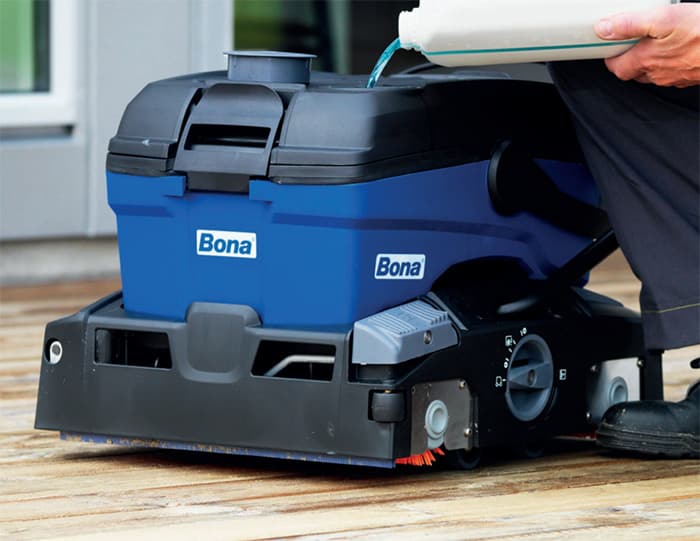
The second step is either the buffing part with a screen or abrasive pad, depending on the finish and condition it’s in. Or, if buffing isn’t an option, we use a special etching, sealing and bonding product like Pallmann Pall-X Bond, Loba 2K Contact or Basic Coatings Tykote. This is applied to the floor and left to dry.
The third and final step is applying the new coat of finish on top.
If you are interested in this service, we’ll come out and test your floors to make sure they can be done properly without any of the issues we talked about above.
You can see the results of our Clean, Screen and Recoat process here: Hardwood Floors After a Clean, Screen and Recoat
If you have hardwax oil instead of a surface finish on your wood floors, then there is a different recoat and rejuvenation procedure. You can see the results of here: Recoating Hardwax Oil Floors
The Final Word…
So if you have hardwood floors that aren’t super damaged, the ‘screen and recoat’ or ‘buff and coat’ procedure could be perfect for you to help extend the life of your floors.
On the other hand… if you have dents, deep scratches, pet urine stains, pot-plant water damage, build-up of products causing contamination issues, UV discoloration from rugs and furniture and greyed, worn out areas in your floors, then we recommend the only way to remove these – a traditional sand and refinish job.
Yes, doing a screen and recoat right will cost a little more and take a bit longer. But the exceptionally better end results will be worth it.
If you have any questions about the screen and recoat procedure, post them in the comments and I’ll be happy to help.
–
Updated Jan 2023

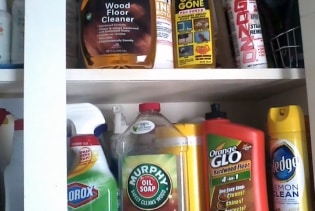
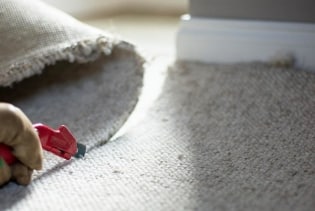
Hello mate! I quite agree with your thoughts.
Thank you Leigh, glad you approve :)
Just wanted to give you a shout from England to tell you I appreciated you writing this great information. Unfortunately I had problems with my floors having a new coating put on and now have to re-do my hardwood floors from scratch. Darn. Wish I had read this earlier. Please keep writing these articles, you are doing a good job.
Sorry about your floors Matt. I hope they turn out better this timae around. And thanks for the compliment, we’re happy that they’re useful :)
Thank you for your website! I really like what you’re doing here.
Very helpful post, thank you. I read it a bit too late though unfortunately. Now I have to have my floors fully sanded, aggghhh! Wish I lived close to you so I could have you fix them for me :(
Hi Louie,
Sorry to hear that. I wish I could help you fix your floors too. Good luck with the next round.
Tadas
Good post!
If I was a homeowner looking for a floor contractor and you were in my area, I would hire you after reading this very well thought out explanation on buff and recoats. I googled “bad hardwood floor installations” and some how through web surfing landed on this gem of a site. I wish your business success (although after reading this I can tell you don’t need my wishes, I’m sure you get plenty of clientel from call backs and word of mouth!)
Thanks for that nice compliment Eddie, glad to be of some help :)
I was just wondering about the dust generated by a buff and coat. My floors are perfect candidates, and we plan to remove all the furniture. However, it’s the light fixtures and paintings and exposed glassware that worry me. We’ve hired a very professional company, so I know if anyone can do it, they can. But what’s the real dust story I should be expecting with this process? Will I walk back in to find a layer on my walls and shelves or will I basically never know it happened because the dust stays so close to the floor? Thank you!
Hi Jessica,
If they have good dustless vacuums and a dust skirt around the buffer, then it shouldn’t be a problem… especially if it’s just the finish layer they’re buffing. If you’re really worried about dust, then there are non-sanding options available now too. They use chemicals to abrade the surface of the floor and allow the new coat to adhere properly.
Hope it goes well for you and it’s not a dusty mess.
Tadas
If my oak wood floors only need a buff and coat, can it also be stained a darker color? They are currently a light honey color, but I would like them to be darker dark brown or walnut. Thank you!
Hi Joyce,
It is possible but it’s not a DIY project. There are pigments available that can be added to finish. Then, with multiple coats, the floor can be darkened. It needs to be applied very evenly though otherwise it will look bad.
Tadas
In preparation for recoating them, I’ve washed my finished oak floors with a dilute solution of Mr. Clean (recoating is to heal a superficial but eye catching long scratch in an otherwise pristine finish). Do I need to worry about residue from Mr. Clean!?
Hi Tony,
We never use Mr. Clean (and don’t recommend it) so I’m not 100% sure. But yes, I would be cautious about reside build-up with non-wood floor specific cleaners. Best bet is to use a proper hardwood floor cleaner from a company like Bona or Basic Coatings. They have complete recoating systems as well that will ensure a proper bond. Hope it goes well.
Tadas